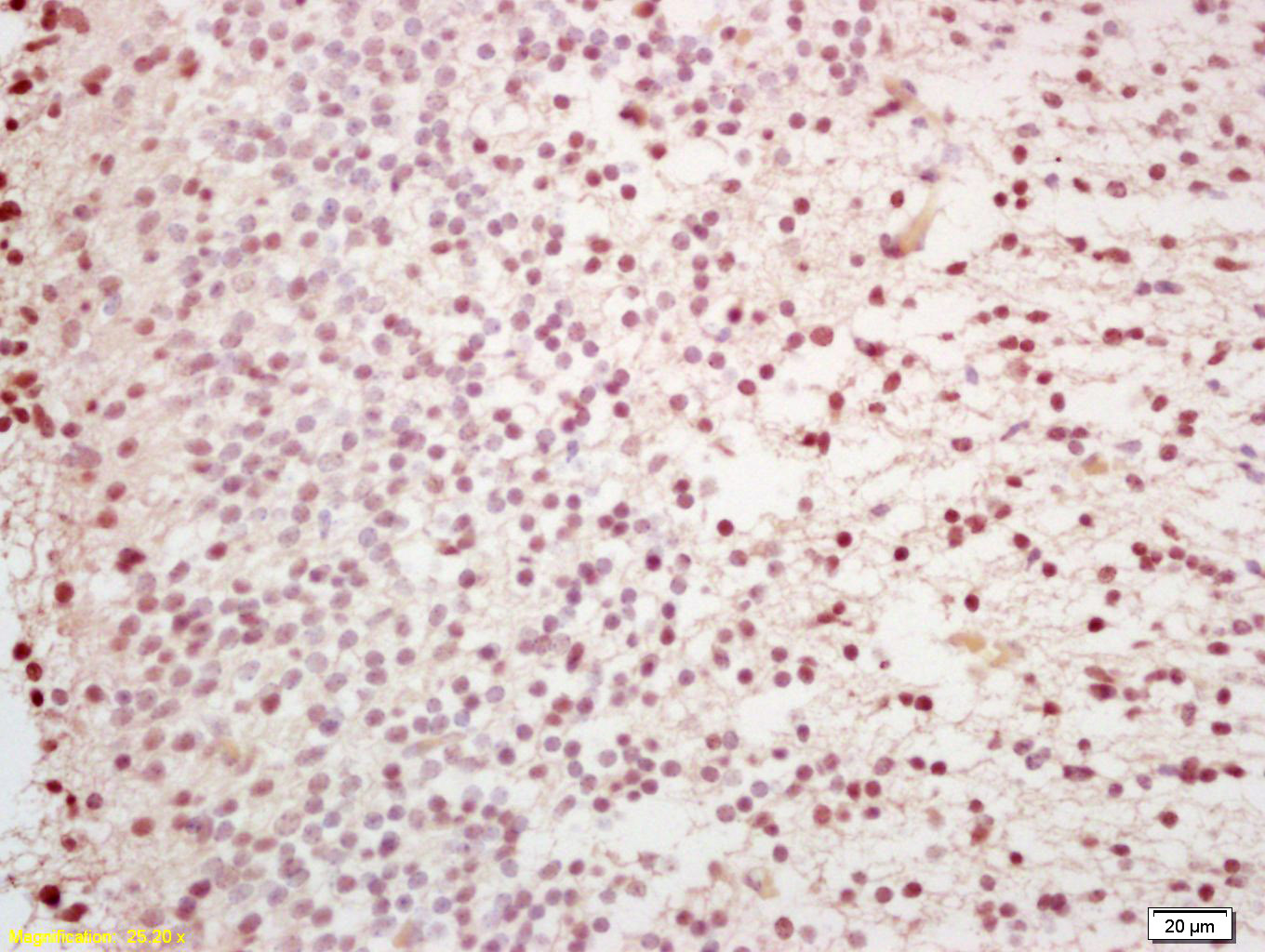
Rabbit Anti-Capicua antibody
Capicua homolog (Drosophila); Cic; CIC; KIAA0306; Protein capicua homolog; CIC_HUMAN.
View History [Clear]
Details
Product Name Capicua Chinese Name Capicua蛋白抗体 Alias Capicua homolog (Drosophila); Cic; CIC; KIAA0306; Protein capicua homolog; CIC_HUMAN. Research Area Neurobiology Epigenetics Immunogen Species Rabbit Clonality Polyclonal React Species Mouse, (predicted: Human, Rat, Dog, Pig, Cow, Horse, Rabbit, Sheep, ) Applications ELISA=1:5000-10000 IHC-P=1:100-500 IHC-F=1:100-500 ICC=1:100-500 IF=1:100-500 (Paraffin sections need antigen repair)
not yet tested in other applications.
optimal dilutions/concentrations should be determined by the end user.Theoretical molecular weight 164kDa Cellular localization The nucleus Form Liquid Concentration 1mg/ml immunogen KLH conjugated synthetic peptide derived from human Capicua: 1475-1560/1608 Lsotype IgG Purification affinity purified by Protein A Buffer Solution 0.01M TBS(pH7.4) with 1% BSA, 0.03% Proclin300 and 50% Glycerol. Storage Shipped at 4℃. Store at -20 °C for one year. Avoid repeated freeze/thaw cycles. Attention This product as supplied is intended for research use only, not for use in human, therapeutic or diagnostic applications. PubMed PubMed Product Detail Capicua is the mammalian ortholog of the drosophilia Cic gene and is part of the HMG-box protein superfamily. Expressed primarily in the fetal brain, Capicua functions as a transciptional repressor and is involved in the development of the nervous system through interaction with the ATXN1 protein. When ATXN1 assembles into stable complexes, it directly binds Capicua, thereby mediating both the activity and expression of Capicua. When Capicua is active, it is able to interact with other developmental proteins to restrict the growth of granule cells and regulate normal neuronal development. Disruptions in the the association of Capicua with proteins such as ATXN1 are thought to cause medulloblastoma, the most common form of perdiatric brain tumor arising from irregular growth of granule cells.
Function:
Transcriptional repressor which may play a role in development of the central nervous system (CNS).
Subunit:
Interacts with ATXN1 and ATXN1L
Subcellular Location:
Nucleus.
Tissue Specificity:
Expressed in fetal brain.
Similarity:
Contains 1 HMG box DNA-binding domain.
SWISS:
Q96RK0
Gene ID:
23152
Database links:Entrez Gene: 23152 Human
SwissProt: Q96RK0 Human
Unigene: 388236 Human
Product Picture
Antigen retrieval: citrate buffer ( 0.01M, pH 6.0 ), Boiling bathing for 15min; Block endogenous peroxidase by 3% Hydrogen peroxide for 30min; Blocking buffer (normal goat serum,C-0005) at 37℃ for 20 min;
Incubation: Anti-Capicua Polyclonal Antibody, Unconjugated(SL11721R) 1:200, overnight at 4°C, followed by conjugation to the secondary antibody(SP-0023) and DAB(C-0010) staining
Bought notes(bought amounts latest0)
No one bought this product
User Comment(Total0User Comment Num)
- No comment



 +86 571 56623320
+86 571 56623320
 +86 18668110335
+86 18668110335

